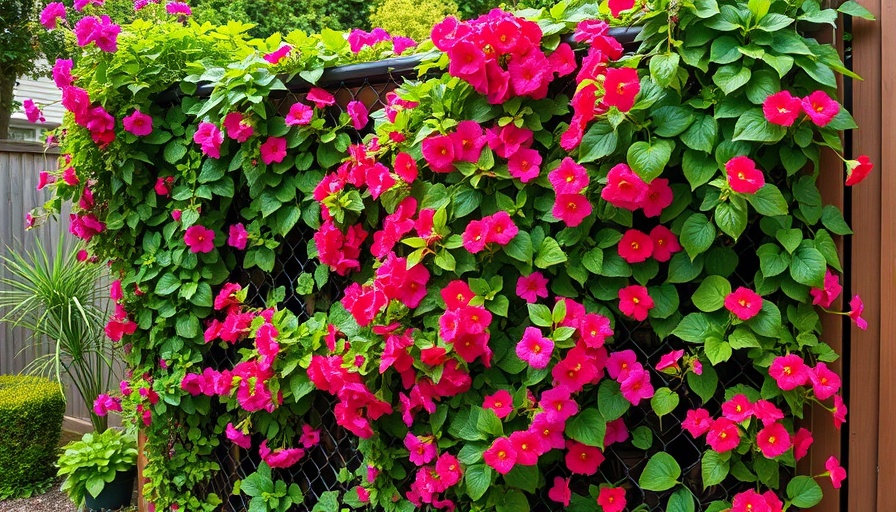
Unlocking Privacy: Enhancing Chain Link Fences for Homeowners
When you first step into a yard encircled by a chain link fence, the practicality of it is undeniable. However, when it comes to privacy and aesthetics, they often leave much to be desired. For homeowners looking to elevate their outdoor spaces, transforming these fences into lush, green retreats has never been more accessible—or rewarding.
Natural Solutions: Beautifying with Greenery
The quickest way to soften a stark chain link fence is through growth. Fast-growing climbing plants such as Clematis, Morning Glory, and Trumpet Vine can weave effortlessly through the links, creating a vibrant green curtain that changes with the seasons. As they mature, these plants not only improve privacy but also introduce vibrant colors and delightful fragrances.
Another natural option is adding bamboo rolls. These eco-friendly elements can be attached directly to the fence for an instant tropical flair. Lightweight and visually appealing, they also blend effortlessly into many garden designs. For those with expansive yards, a row of hedges—like Boxwood or Privet—can provide a thick green privacy screen. Not only do these plants enhance visual appeal but also serve to reduce noise and wind.
Decorative Panels and Screens: Elevating Aesthetics
For homeowners who lean towards a more structured look, attaching wooden slats offers a modern upgrade. Horizontal or vertical arrangements can dramatically enhance the appearance of a chain link fence, giving it a warm and inviting feel. Alternatively, decorative metal panels with intricate designs provide artistic flair while offering partial concealment. The interplay of light through such panels can create dramatic silhouettes, especially in the evenings.
Reed or willow screens are another excellent option, providing rustic charm with easy installation. Available in rolls, these screens can be secured to the chain link, instantly providing coverage and blending beautifully within natural landscapes.
Embracing Creativity: Upcycling for Unique Solutions
Homeowners can tap into their creative sides with upcycling. Drape outdoor fabric in bold colors or patterns across the fence to introduce style and personality. This low-cost upgrade can coordinate with existing patio decor, creating a cohesive outdoor aesthetic.
Moreover, transforming old pallets into rustic privacy walls proves both budget-friendly and stylish. A simple paint or stain can make these installations pop. Vintage window shutters bring a quirky character, adding a splash of color while enhancing privacy. Hanging them in creative arrangements can elevate an otherwise mundane fence into an artistic statement.
DIY and Artistic Options: Personal Touches for a Cozy Retreat
For those who cherish a breezy outdoor environment, outdoor curtains are a fantastic addition. By installing curtain rods along the top of the fence, homeowners can enjoy the flexibility of privacy when needed while keeping the space open and inviting at other times.
The Future of Fence Privacy Solutions
As we look ahead, enhanced privacy solutions will likely incorporate more sustainable practices. Innovations in eco-friendly materials and smart gardening technologies will enable homeowners to achieve a blend of style, function, and environmental responsibility. Imagine fences that can adapt to privacy needs with movable panels or integrated planters that are both beautiful and functional.
In conclusion, transforming a chain link fence isn’t just about aesthetics; it’s about creating an outdoor sanctuary. With a combination of natural growth, decorative elements, and creative DIY solutions, homeowners can craft a yard that reflects personal style while providing the privacy they desire. Don’t let a plain fence hold you back—embrace the challenges and opportunities that make your garden uniquely yours!
 Add Row
Add Row  Add
Add 




 Add Row
Add Row  Add
Add 

Write A Comment